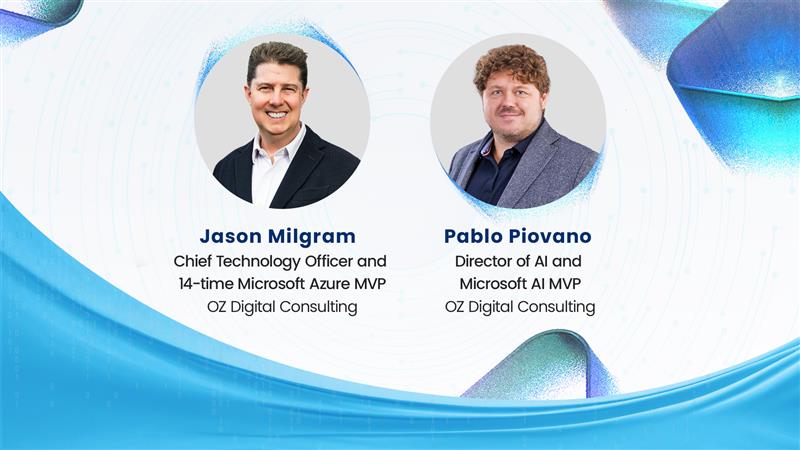For businesses that wish to remain competitive in the digital age, an accurate, up-to-date 360-degree view of a customer’s data is no longer a luxury but a necessity.
Of course, achieving such insight and advantage can often seem easier said than done—especially without an experienced partner in your corner.
So here, courtesy of OZ, is a concise-yet-comprehensive guide to leveraging the power of data analytics, enterprise integration, intelligent automation, web/mobile applications, and cloud and IT services, to unlock a game-changing Customer 360 view for your business.
What is Customer 360?
Customer 360 is an all-encompassing view of a customer that captures data from every interaction and touchpoint. This comprehensive understanding of the customer allows businesses to provide personalized experiences at scale, build deeper relationships, and improve retention rates. It empowers companies with a single source of truth about their customers so they can make better decisions faster.
Benefits of a 360-Degree View of Customer Data
Customer 360 provides invaluable insights into customer behavior, preferences, and buying patterns which can be used to create more targeted marketing campaigns and personalize offers for each individual consumer. With this information in hand, businesses can tailor products or services to meet the specific needs of their customers while providing them with an improved experience overall.
Further, having access to detailed customer data helps organizations identify trends to anticipate future demand, increase customer loyalty and satisfaction, and uncover opportunities for sales conversions and growth.
Finally, implementing a Customer 360 strategy also helps improve operational performance by providing actionable insights into areas where improvements may be needed—enabling organizations to not only respond faster but also anticipate future needs based on past behaviors which ultimately drives revenue growth over time,
Achieving True Customer 360
To get the most out of your customer 360 strategy, you need to integrate data from all departments and touchpoints into one central repository, requiring careful planning and execution.
Important areas of focus include:
-
- Integrate data sources. Integrating multiple sources of customer data is key to creating an accurate picture of each individual customer. The first step is identifying which sources are relevant to your business. These could include CRM systems, marketing automation tools, analytics platforms, or even social media accounts. Once you have identified all the necessary sources, you need to decide how they will be connected–whether through APIs or manual processes such as CSV files or spreadsheets. Finally, you must ensure that all incoming data is consistent across channels so that it can be accurately analyzed down the line.
- Automate where possible. Manually transferring large amounts of data between different systems can take up valuable time and resources – so automating certain processes wherever possible can help streamline operations significantly. For example, automated rules-based triggers can alert staff when customers reach certain milestones—e.g., making their first purchase—or send them tailored offers based on past behavior patterns—such as buying specific products. Automation also helps ensure accuracy by eliminating human error from manual tasks like inputting information into databases or updating records with new details about customers’ preferences or interests over time.
- Analyze your data. Once all your data has been integrated into one place, it’s time to start analyzing it in order to gain insights into your customers’ needs and behaviors, individually and collectively, as part of larger trends within your industry sector. You should look at factors such as purchasing habits, frequency/duration/time spent engaging with content, response rates for campaigns, website usage stats, etcetera then use this information to segment audiences according to common characteristics. Doing this allows you to target them more effectively with relevant messaging that resonates with their interests, Additionally, by understanding what drives conversions for different types of users, businesses are able to identify opportunities for improvement throughout their entire sales funnel.
- Don’t forget to monitor. Keeping track of metrics such as click-through rates, conversion rates, and engagement levels can give an indication if changes need to be made to adjust tactics accordingly. This could include refining targeting strategies, optimizing landing pages, or tweaking email copy; staying agile ensures success now and future growth potential too.
Challenges of Implementing a Customer 360 Strategy
A successful Customer 360 strategy requires significant resources including time, money, and personnel as well as sophisticated technology solutions such as analytics tools and enterprise integration platforms.
Here are a few potential issues to consider:
-
- Data Quality Issues. One of the biggest challenges in implementing a customer 360 strategy is ensuring data quality. Data must be accurate and up to date to provide an effective view of customers. Poorly maintained databases or siloed systems can lead to incomplete or inaccurate data which will not provide an accurate picture of customers. To ensure data accuracy, companies should implement processes for regularly auditing their databases and integrating multiple sources into one unified system.
-
- Siloed Data Sources. Another challenge when implementing a customer 360 strategy is dealing with siloed data sources that are spread across different departments within the company. This makes it difficult to get an integrated view of all customer interactions as each department may have its own version of the truth about customers based on their own datasets. Companies need to develop strategies for consolidating these disparate datasets into one unified source to gain access to complete information about customers from every angle.
- Lack of IT Resources. Implementing a customer 360 strategy also requires significant resources from IT teams who often lack the time or expertise needed for such projects due to other priorities within the organization. Companies should consider outsourcing certain aspects of this project, if necessary, to free up internal resources and ensure successful implementation without sacrificing quality or speed. (Enter OZ 360.)
- Ecosystem-wide buy-in. Companies must also ensure that all departments have access to the same version of the truth about the customer for it to be effective across multiple channels—something which may require changes in organizational structure or processes within certain teams.
- Regulatory compliance. Any new system must adhere strictly with applicable privacy regulations such as GDPR or CCPA depending on where your business operates geographically.
Conclusion
By creating a unified view of customer data across all departments, businesses can leverage the power of analytics to better understand their customers and create more personalized experiences. Implementing a Customer 360 strategy may present some challenges, but with the right tools and processes in place it can be an invaluable asset for any organization looking to stay ahead of the competition. With its ability to provide actionable insights from every interaction with customers, Customer 360 should be part of any company’s overall business strategy.
Your customers are three-dimensional. Now your data—and ROI—can reflect that.
With OZ 360 you can now reconcile specific customer data across multiple databases, leveraging householding logic to significantly improve CX, customer retention, and profitability. Contact us to get started.



